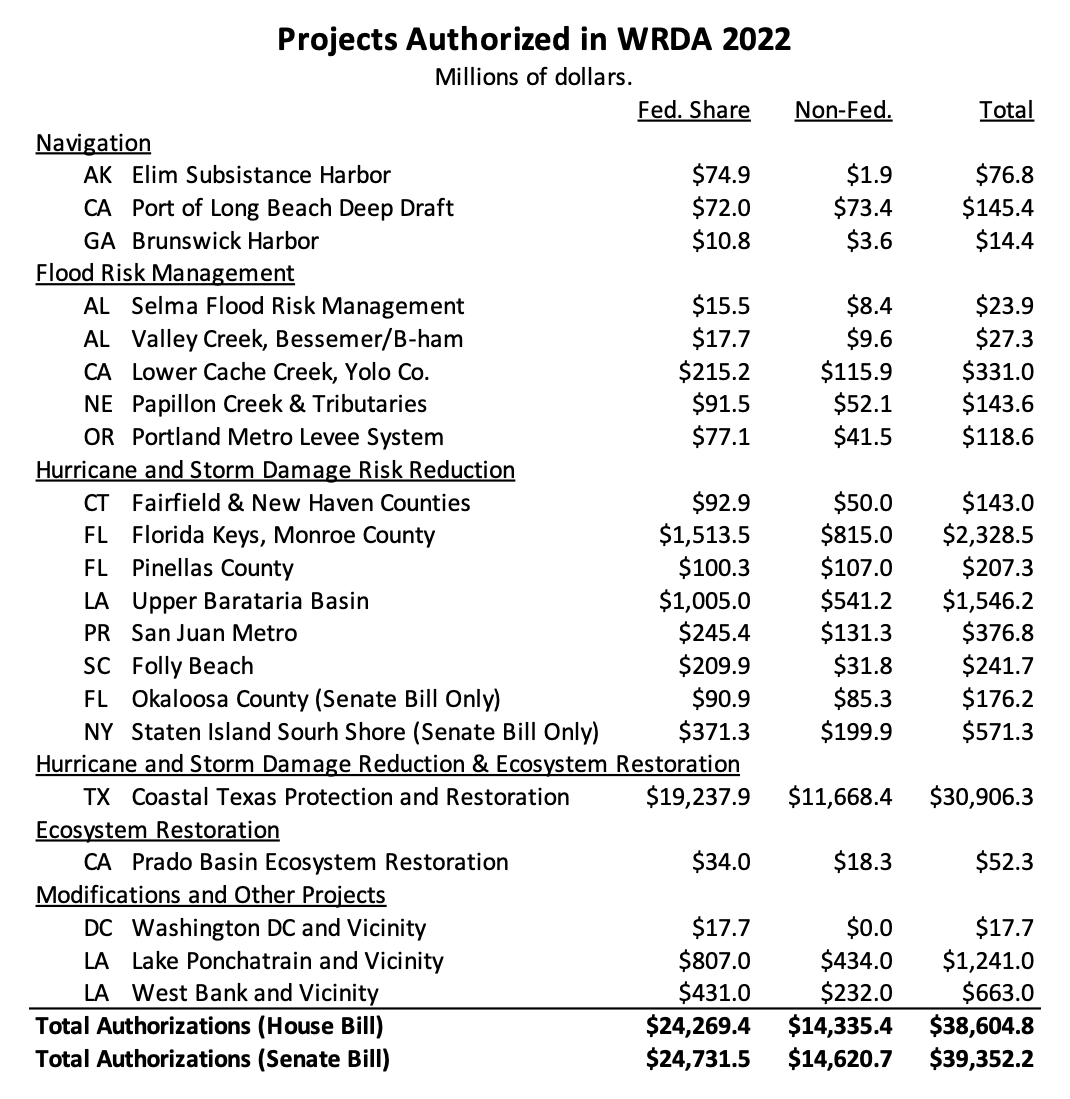This week, the House Transportation and Infrastructure Committee approved bipartisan legislation reauthorizing the Army Corps of Engineers water resources program for two more years, following the Senate Environment and Public Works Committee’s approval of a similar bill last week.
Both committees developed their “WRDA” bills on a bipartisan basis, allowing the House bill to pass committee by voice vote and the Senate bill to pass committee by a vote of 20 to 0.
The House bill is H.R. 7776, and the final version as approved by the committee is not yet available (you have to take the amendment in the nature of a substitute as base text and then incorporate the seven amendments to the “ANS” (1 2 3 4 5 6 7) approved by the committee). The Senate bill as reported from committee is already online (S. 4136). A section-by-section summary of the House bill is here and a section-by-section summary of the Senate bill is here.
The biennial water resources bill authorizes – but does not provide any funding for – specific projects and activities to be carried out by the Corps. The actual funding must be provided by the Appropriations Committees, and the cumulative project authorization totals set by multiple WRDA bills always outpaces the ability of the appropriators to fund those projects, sometimes to a ridiculous degree.
The nonpartisan Congressional Research Service noted in a report last fall that “Numerous studies and projects authorized for construction in previous WRDAs remain unfunded. USACE has an estimated $109 billion construction backlog, as well as authorized but unfunded investigations and operation and maintenance activities.” In the bipartisan infrastructure law enacted two months after that CRS report was written, Congress provided $17.1 billion to the Corps, primarily as a one-time buydown of part of that unfunded backlog. (Note that 109 minus 17 still leaves an unfunded backlog of around $90 billion.)
The regular appropriated funding level for the Construction account of the Corps’ civil works program has varied between $1.7 billion and $2.7 billion per year over the last 20 years:

That funding baseline, extrapolated into the future, makes one of the projects authorized by the new WRDA bills stand out from the others:

That $31 billion Texas project – $19.2 billion federal share, and $11.7 billion non-federal share – is, by far, the largest project authorization anyone can remember seeing in a WRDA bill, ever, by a long shot. If the bill is enacted, that project would, single-handedly, erase the $17 billion of progress made by the bipartisan infrastructure bill towards paying down the old Corps unfunded backlog and push that backlog to new heights.
The name of the project as presented in the bill does not give a precise location, but the Chief of Engineers’ report on the Corps website makes it clear that the project is centered around a massive floodwall protecting Galveston Bay (and thus Houston) from storm surges coming in from the Gulf of Mexico. (Locals call the plan the “Ike Dike” because it was first discussed seriously after Hurricane Ike in 2008.
A Washington Post article earlier this month discussed the project and noted that “the current $29 billion price, recently increased from $26 billion, is universally regarded as a short-term estimate. The projected cost, calculated in 2020 dollars, doesn’t factor inflation or include a few billion in ancillary construction.”
(Ed. Note: While the Texas project may be justifiable and may even be necessary, its sheer size compared to everything else the Corps has to do on an annual basis probably means that Congress should start looking at new ways to finance climate change megaprojects other than the annual discretionary appropriations process.)





